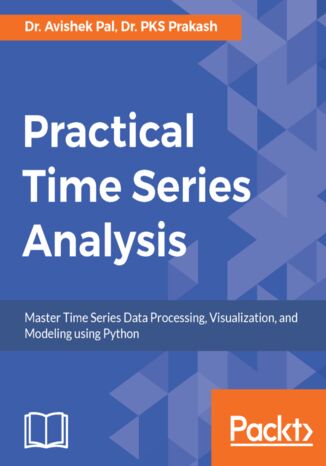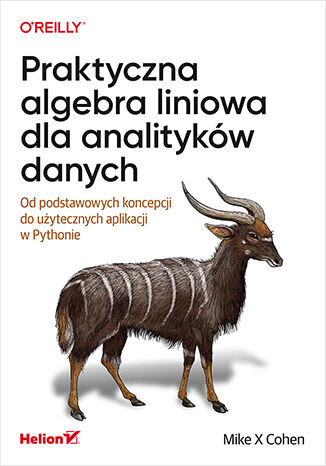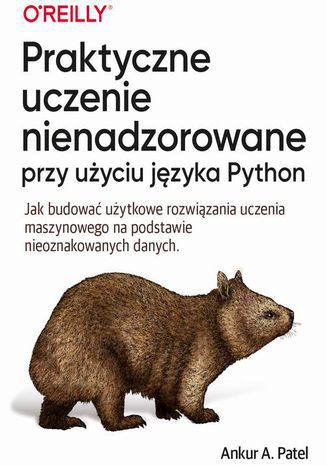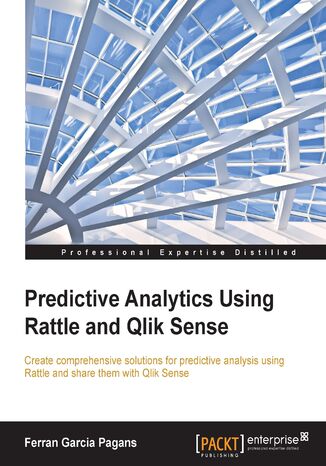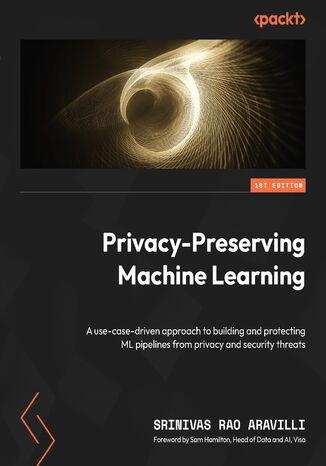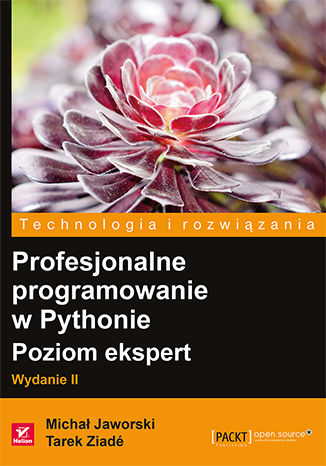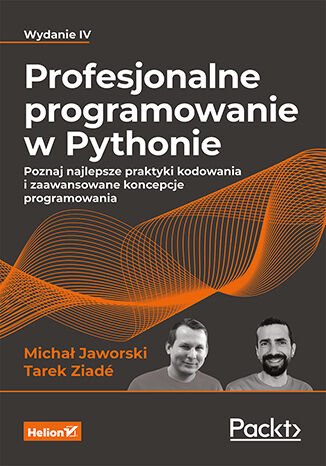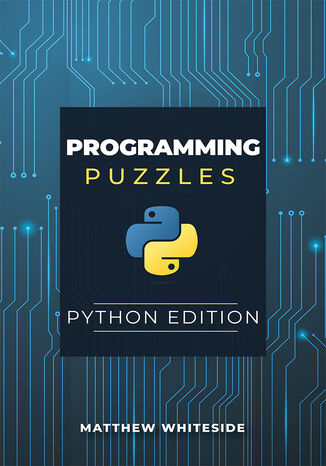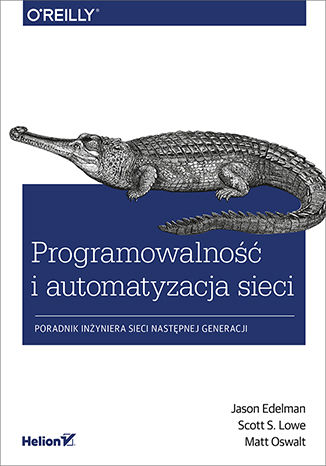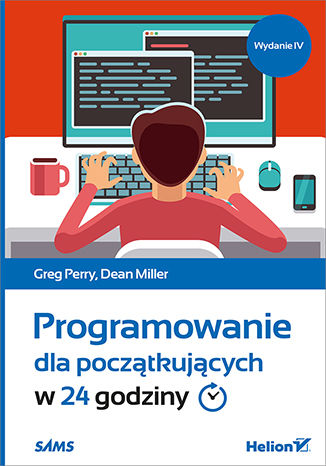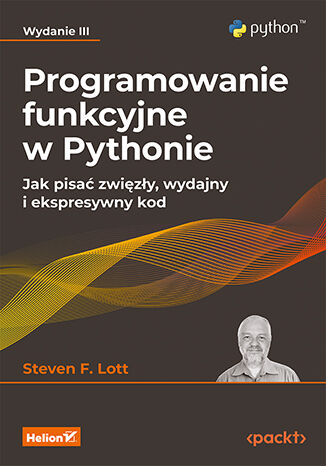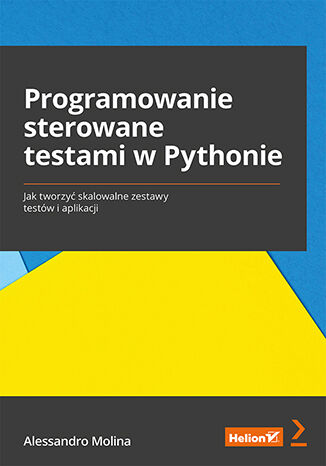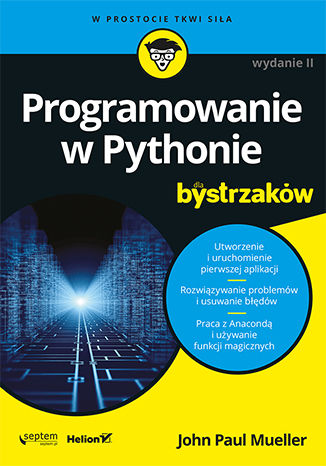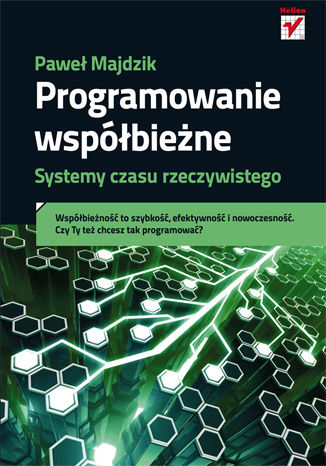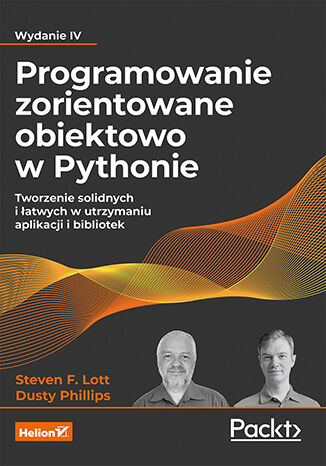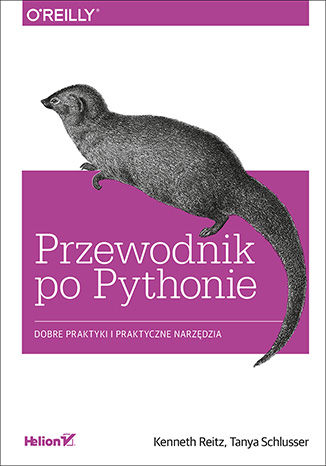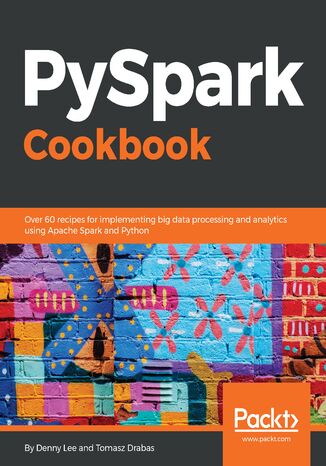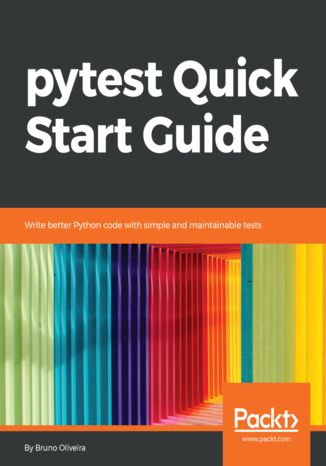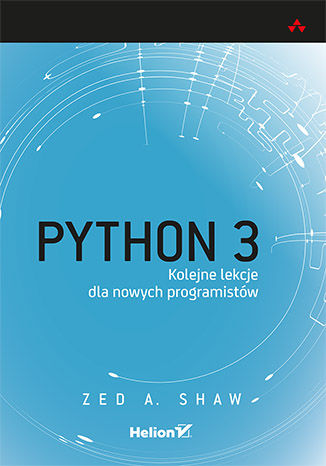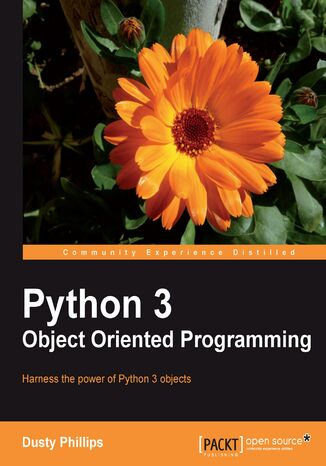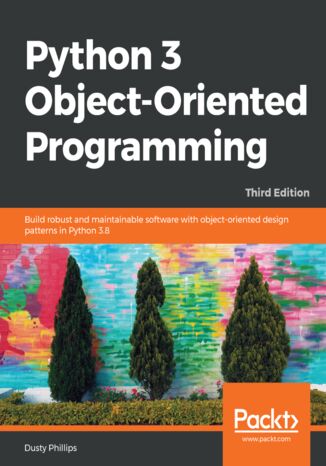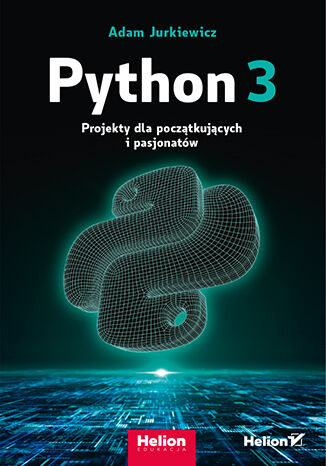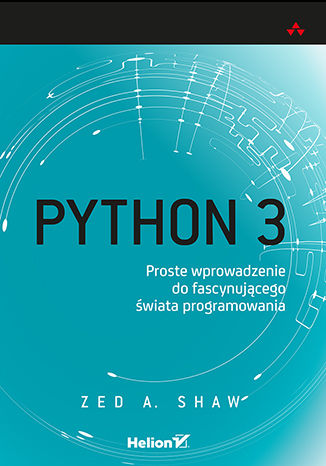Категорії
-
- Біткойн
- Ділова жінка
- Коучинг
- Контроль
- Електронний бізнес
- Економіка
- Фінанси
- Фондова біржа та інвестиції
- Особисті компетенції
- Комп'ютер в офісі
- Комунікація та переговори
- Малий бізнес
- Маркетинг
- Мотивація
- Мультимедійне навчання
- Нерухомість
- Переконання та НЛП
- Податки
- Соціальна політика
- Порадники
- Презентації
- Лідерство
- Зв'язки з громадськістю
- Звіти, аналізи
- Секрет
- Соціальні засоби комунікації
- Продаж
- Стартап
- Ваша кар'єра
- Управління
- Управління проектами
- Людські ресурси (HR)
-
- Architektura i wnętrza
- Безпека життєдіяльності
- Biznes i Ekonomia
- Будинок та сад
- Електронний бізнес
- Ekonomia i finanse
- Езотерика
- Фінанси
- Особисті фінанси
- Бізнес
- Фотографія
- Інформатика
- Відділ кадрів та оплата праці
- Для жінок
- Комп'ютери, Excel
- Бухгалтерія
- Культура та література
- Наукові та академічні
- Охорона навколишнього середовища
- Впливові
- Освіта
- Податки
- Подорожі
- Психологія
- Релігія
- Сільське господарство
- Ринок книг і преси
- Транспорт та спедиція
- Здоров'я та краса
-
- Офісні застосунки
- Бази даних
- Біоінформатика
- Бізнес ІТ
- CAD/CAM
- Digital Lifestyle
- DTP
- Електроніка
- Цифрова фотографія
- Комп'ютерна графіка
- Ігри
- Хакування
- Hardware
- IT w ekonomii
- Наукові пакети
- Шкільні підручники
- Основи комп'ютера
- Програмування
- Мобільне програмування
- Інтернет-сервери
- Комп'ютерні мережі
- Стартап
- Операційні системи
- Штучний інтелект
- Технологія для дітей
- Вебмайстерність
-
- Антології
- Балада
- Біографії та автобіографії
- Для дорослих
- Драми
- Журнали, щоденники, листи
- Епос, епопея
- Нарис
- Наукова фантастика та фантастика
- Фельєтони
- Художня література
- Гумор, сатира
- Інше
- Класичний
- Кримінальний роман
- Нехудожня література
- Художня література
- Mity i legendy
- Лауреати Нобелівської премії
- Новели
- Побутовий роман
- Okultyzm i magia
- Оповідання
- Спогади
- Подорожі
- Оповідна поезія
- Поезія
- Політика
- Науково-популярна
- Роман
- Історичний роман
- Проза
- Пригодницька
- Журналістика
- Роман-репортаж
- Romans i literatura obyczajowa
- Сенсація
- Трилер, жах
- Інтерв'ю та спогади
-
- Археологія
- Bibliotekoznawstwo
- Кінознавство / Теорія кіно
- Філологія
- Польська філологія
- Філософія
- Finanse i bankowość
- Географія
- Економіка
- Торгівля. Світова економіка
- Історія та археологія
- Історія мистецтва і архітектури
- Культурологія
- Мовознавство
- літературні студії
- Логістика
- Математика
- Ліки
- Гуманітарні науки
- Педагогіка
- Навчальні засоби
- Науково-популярна
- Інше
- Психологія
- Соціологія
- Театральні студії
- Богослов’я
- Економічні теорії та науки
- Transport i spedycja
- Фізичне виховання
- Zarządzanie i marketing
-
- Безпека життєдіяльності
- Історія
- Дорожній кодекс. Водійські права
- Юридичні науки
- Охорона здоров'я
- Загальне, компендіум
- Академічні підручники
- Інше
- Закон про будівництво і житло
- Цивільне право
- Фінансове право
- Господарське право
- Господарське та комерційне право
- Кримінальний закон
- Кримінальне право. Кримінальні злочини. Кримінологія
- Міжнародне право
- Міжнародне та іноземне право
- Закон про охорону здоров'я
- Закон про освіту
- Податкове право
- Трудове право та законодавство про соціальне забезпечення
- Громадське, конституційне та адміністративне право
- Кодекс про шлюб і сім'ю
- Аграрне право
- Соціальне право, трудове право
- Законодавство Євросоюзу
- Промисловість
- Сільське господарство та захист навколишнього середовища
- Словники та енциклопедії
- Державні закупівлі
- Управління
-
- Африка
- Альбоми
- Південна Америка
- Центральна та Північна Америка
- Австралія, Нова Зеландія, Океанія
- Австрія
- Азії
- Балкани
- Близький Схід
- Болгарія
- Китай
- Хорватія
- Чеська Республіка
- Данія
- Єгипет
- Естонія
- Європа
- Франція
- Гори
- Греція
- Іспанія
- Нідерланди
- Ісландія
- Литва
- Латвія
- Mapy, Plany miast, Atlasy
- Мініпутівники
- Німеччина
- Норвегія
- Активні подорожі
- Польща
- Португалія
- Інше
- Przewodniki po hotelach i restauracjach
- Росія
- Румунія
- Словаччина
- Словенія
- Швейцарія
- Швеція
- Світ
- Туреччина
- Україна
- Угорщина
- Велика Британія
- Італія
-
- Філософія життя
- Kompetencje psychospołeczne
- Міжособистісне спілкування
- Mindfulness
- Загальне
- Переконання та НЛП
- Академічна психологія
- Психологія душі та розуму
- Психологія праці
- Relacje i związki
- Батьківство та дитяча психологія
- Вирішення проблем
- Інтелектуальний розвиток
- Секрет
- Сексуальність
- Спокушання
- Зовнішній вигляд та імідж
- Філософія життя
-
- Біткойн
- Ділова жінка
- Коучинг
- Контроль
- Електронний бізнес
- Економіка
- Фінанси
- Фондова біржа та інвестиції
- Особисті компетенції
- Комунікація та переговори
- Малий бізнес
- Маркетинг
- Мотивація
- Нерухомість
- Переконання та НЛП
- Податки
- Соціальна політика
- Порадники
- Презентації
- Лідерство
- Зв'язки з громадськістю
- Секрет
- Соціальні засоби комунікації
- Продаж
- Стартап
- Ваша кар'єра
- Управління
- Управління проектами
- Людські ресурси (HR)
-
- Антології
- Балада
- Біографії та автобіографії
- Для дорослих
- Драми
- Журнали, щоденники, листи
- Епос, епопея
- Нарис
- Наукова фантастика та фантастика
- Фельєтони
- Художня література
- Гумор, сатира
- Інше
- Класичний
- Кримінальний роман
- Нехудожня література
- Художня література
- Mity i legendy
- Лауреати Нобелівської премії
- Новели
- Побутовий роман
- Okultyzm i magia
- Оповідання
- Спогади
- Подорожі
- Поезія
- Політика
- Науково-популярна
- Роман
- Історичний роман
- Проза
- Пригодницька
- Журналістика
- Роман-репортаж
- Romans i literatura obyczajowa
- Сенсація
- Трилер, жах
- Інтерв'ю та спогади
-
- Філософія життя
- Міжособистісне спілкування
- Mindfulness
- Загальне
- Переконання та НЛП
- Академічна психологія
- Психологія душі та розуму
- Психологія праці
- Relacje i związki
- Батьківство та дитяча психологія
- Вирішення проблем
- Інтелектуальний розвиток
- Секрет
- Сексуальність
- Спокушання
- Зовнішній вигляд та імідж
- Філософія життя
- Електронні книги
- Програмування
- Python
Python
Time Series Analysis allows us to analyze data which is generated over a period of time and has sequential interdependencies between the observations. This book describes special mathematical tricks and techniques which are geared towards exploring the internal structures of time series data and generating powerful descriptive and predictive insights. Also, the book is full of real-life examples of time series and their analyses using cutting-edge solutions developed in Python. The book starts with descriptive analysis to create insightful visualizations of internal structures such as trend, seasonality, and autocorrelation. Next, the statistical methods of dealing with autocorrelation and non-stationary time series are described. This is followed by exponential smoothing to produce meaningful insights from noisy time series data. At this point, we shift focus towards predictive analysis and introduce autoregressive models such as ARMA and ARIMA for time series forecasting. Later, powerful deep learning methods are presented, to develop accurate forecasting models for complex time series, and under the availability of little domain knowledge. All the topics are illustrated with real-life problem scenarios and their solutions by best-practice implementations in Python.The book concludes with the Appendix, with a brief discussion of programming and solving data science problems using Python.
Pozornie nie dzieje się nic złego, jeśli inżynier lub analityk danych nie rozumie algebry liniowej. Może korzystać z już istniejących narzędzi i nie przejmować się szczegółami ich implementacji. Warto jednak dokładnie poznać algorytmy używane w nauce o danych i dostosować do swoich potrzeb istniejące metody obliczeniowe, tutaj więc nowoczesna algebra liniowa okazuje się nieodzowna. Jeśli chcesz ją poznać w nowoczesnej, praktycznej formie, najlepiej posłużyć się kodem i zastosowaniem algebry liniowej w analizie danych czy symulacjach numerycznych. To książka przeznaczona dla osób, które pracują ze zbiorami danych. Jest praktycznym przewodnikiem po koncepcjach algebry liniowej, pomyślanym tak, by ułatwić ich zrozumienie i zastosowanie w użytecznych obliczeniach. Poszczególne zagadnienia przedstawiono za pomocą kodu Pythona, wraz z przykładami ich wykorzystania w nauce o danych, uczeniu maszynowym, uczeniu głębokim, symulacjach i przetwarzaniu danych biomedycznych. Dzięki podręcznikowi nauczysz się arytmetyki macierzowej, poznasz istotne rozkłady macierzy, w tym LU i QR, a także rozkład według wartości osobliwych, zapoznasz się też z takimi zagadnieniami jak model najmniejszych kwadratów i analiza głównych składowych.
Praktyczne uczenie nienadzorowane przy użyciu języka Python
Wielu ekspertów branżowych uważa uczenie nienadzorowane za kolejną granicę w dziedzinie sztucznej inteligencji, która może stanowić klucz do pełnej sztucznej inteligencji. Ponieważ większość danych na świecie jest nieoznakowana, nie można do nich zastosować konwencjonalnego uczenia nadzorowanego. Z kolei uczenie nienadzorowane może być stosowane wobec nieoznakowanych zbiorów danych w celu odkrycia istotnych wzorców ukrytych głęboko w tych danych, które dla człowieka mogą być niemal niemożliwe do odkrycia. Autor Ankur Patel pokazuje, jak stosować uczenie nienadzorowane przy wykorzystaniu dwóch prostych platform dla języka Python: Scikit-learn oraz TensorFlow (wraz z Keras). Dzięki dołączonemu kodowi i praktycznym przykładom analitycy danych będą mogli identyfikować trudne do znalezienia wzorce w danych i odkrywać dogłębne zależności biznesowe, wykrywać anomalie, przeprowadzać automatyczną selekcję zmiennych i generować syntetyczne zbiory danych. Wystarczy znajomość programowania i nieco doświadczenia w uczeniu maszynowym, aby zająć się: Porównywaniem mocnych i słabych stron różnych podejść do uczenia maszynowego: uczenia nadzorowanego, nienadzorowanego i wzmacnianego. Przygotowywaniem i zarządzaniem projektami uczenia maszynowego. Budowaniem systemu wykrywania anomalii w celu wychwycenia oszustwa dotyczącego kard kredytowych. Rozdzielaniem użytkowników na wydzielone i jednorodne grupy. Przeprowadzaniem uczenia pół-nadzorowanego. Opracowywaniem systemów polecania filmów z użyciem ograniczonych automatów Boltzmanna. Generowaniem syntetycznych obrazów przy użyciu generujących sieci antagonistycznych. Badacze, inżynierowie i studenci docenią tę książkę pełną praktycznych technik uczenia nienadzorowanego, napisaną prostym językiem z nieskomplikowanymi przykładami w języku Python, które można szybko i skutecznie implementować. Sarah Nagy Główny analityk danych w firmie Edison Ankur A. Patel jest wiceprezesem ds. informatyki analitycznej w firmie 7Park Data, wspieranej przez firmę inwestycyjną Vista Equity Partners. W firmie 7Park Data, Ankur i jego zespół analizy danych wykorzystują dane alternatywne do opracowywania produktów związanych z danymi dla funduszy hedgingowych i korporacji oraz rozwijają usługi uczenia maszynowego dla klientów firmowych.
Srinivasa Rao Aravilli, Sam Hamilton
– In an era of evolving privacy regulations, compliance is mandatory for every enterprise – Machine learning engineers face the dual challenge of analyzing vast amounts of data for insights while protecting sensitive information – This book addresses the complexities arising from large data volumes and the scarcity of in-depth privacy-preserving machine learning expertise, and covers a comprehensive range of topics from data privacy and machine learning privacy threats to real-world privacy-preserving cases – As you progress, you’ll be guided through developing anti-money laundering solutions using federated learning and differential privacy – Dedicated sections will explore data in-memory attacks and strategies for safeguarding data and ML models – You’ll also explore the imperative nature of confidential computation and privacy-preserving machine learning benchmarks, as well as frontier research in the field – Upon completion, you’ll possess a thorough understanding of privacy-preserving machine learning, equipping them to effectively shield data from real-world threats and attacks
Privilege Escalation Techniques. Learn the art of exploiting Windows and Linux systems
Privilege Escalation Techniques is a detailed guide to privilege escalation techniques and tools for both Windows and Linux systems. This is a one-of-a-kind resource that will deepen your understanding of both platforms and provide detailed, easy-to-follow instructions for your first foray into privilege escalation. The book uses virtual environments that you can download to test and run tools and techniques. After a refresher on gaining access and surveying systems, each chapter will feature an exploitation challenge in the form of pre-built virtual machines (VMs). As you progress, you will learn how to enumerate and exploit a target Linux or Windows system. You’ll then get a demonstration on how you can escalate your privileges to the highest level.By the end of this book, you will have gained all the knowledge and skills you need to be able to perform local kernel exploits, escalate privileges through vulnerabilities in services, maintain persistence, and enumerate information from the target such as passwords and password hashes.
Profesjonalne programowanie w Pythonie. Poziom ekspert. Wydanie II
Twórcy Pythona niemal od początku starali się opracować wieloparadygmatowy język zorientowany na czytelność kodu i produktywność programisty. Dziś język ten jest uważany za wszechstronny i potężny, a do tego cechuje się prostotą i elastycznością. Nadaje się zarówno do pisania niedużych skryptów, jak i wielkich systemów, a także do wysoce specjalistycznych zadań, jak choćby analiza danych w celach naukowych. Mimo to pisanie kodu, który jest wydajny, prosty w utrzymaniu oraz łatwy w użyciu, wciąż sprawia problemy nawet zaawansowanym programistom Pythona. Niniejsza książka jest zbiorem praktyk stosowanych przez najlepszych programistów pracujących z Pythonem. Jest przeznaczona dla osób zawodowo zajmujących się rozwojem oprogramowania oraz dla ambitnych pasjonatów w tej dziedzinie. Poza opisem zaawansowanych technik programowania w Pythonie znalazły się tu również informacje o narzędziach i technikach stosowanych obecnie przez profesjonalnych programistów. Opisano metody zarządzania kodem, tworzenia, dokumentowania i testowania kodu oraz zasady optymalizacji oprogramowania. Przedstawiono również wzorce projektowe, które szczególnie docenią programiści Pythona. Najważniejsze zagadnienia przedstawione w książce: metodologie pracy w Pythonie i najlepsze praktyki składniowe rozszerzenia Pythona napisane w innych językach programowania techniki profilowania aplikacji przetwarzanie współbieżne i równoległe najprzydatniejsze wzorce projektowe Python — niezawodne narzędzie dla profesjonalisty!
Python cechuje się dużą prostotą, a przy tym jest wszechstronny. Ma bardzo szeroki zakres zastosowania, przez co coraz więcej osób podejmuje naukę programowania w tym języku. Python należy do języków najczęściej używanych przez programistów, którzy tworzą w nim gry i aplikacje webowe. Świetnie sprawdza się ponadto w pracy z wykorzystaniem sztucznej inteligencji i uczenia maszynowego. Tym, co programiści doceniają w Pythonie, jest też obiektywność. Ucząc się, przyswajamy bowiem również zasady programowania obiektywnego, a więc koncepcji dla wielu innych języków. Oto książka, którą docenią i osoby rozpoczynające przygodę z programowaniem, i programiści znający już inne języki. Znajdziesz tu zarówno podstawowe informacje o Pythonie, jak i wskazówki dotyczące pisania rozszerzeń, dzięki którym będziesz w stanie korzystać z atutów kilku języków. Przydatnym uzupełnieniem są liczne przykłady, pokazujące, jak rozwiązywać częste problemy. To już czwarte wydanie tego praktycznego podręcznika ? docenianego za to, że pozwala dobrze poznać Pythona i uczy, jak pisać wydajny i czytelny kod. Z książki dowiesz się: jakie są najważniejsze usprawnienia w Pythonie jak przeprowadzić izolację środowiska jak używać najnowszych funkcji w Pythonie czym Python się różni od innych języków co to jest współbieżność i wielowątkowość na czym polega programowanie sterowane zdarzeniami jakie są elementy metaprogramowania jak przeprowadzić automatyzację kontroli jakości jak optymalizować kod Koduj wszystko w Pythonie. Obiektywnie, strukturalnie i funkcjonalnie!
Programming Puzzles is a meticulously crafted collection designed to elevate your coding skills through engaging and challenging exercises. The book begins with a helpful guide on getting started, ensuring that readers are well-prepared to tackle the puzzles ahead. As you delve deeper, you'll encounter a series of challenge puzzles that test your logical thinking and problem-solving abilities, followed by fun puzzles that offer a more relaxed yet equally rewarding experience.Hints are provided for the challenge puzzles to guide you through particularly tough spots, ensuring you stay motivated without giving away the solutions. Once you've worked through the puzzles, comprehensive solutions are provided, allowing you to understand different approaches and learn from your mistakes. Each section of the book is designed to progressively build your skills, from basic logic to advanced problem-solving techniques, making it an invaluable resource for anyone looking to improve their programming abilities.The journey through this book is not just about finding solutions; it's about developing a deeper understanding of how to approach and solve complex problems. By the end of this book, you'll have honed your coding skills, enhanced your logical thinking, and gained a new appreciation for the art of problem-solving in programming.
Programowalność i automatyzacja sieci. Poradnik inżyniera sieci następnej generacji
Jason Edelman, Scott S. Lowe, Matt Oswalt
Programowalna i zautomatyzowana sieć upraszcza pracę jej administratora. Rozwój technologii radykalnie komplikuje takie zadania jak zarządzanie i operowanie sprzętem sieciowym, topologiami sieci i połączeniami sieciowymi. Trzeba tu mieć na uwadze systemy operacyjne, nowe metodologie oraz narzędzia. W takich warunkach zarządzanie większą czy nieco bardziej złożoną siecią wyłącznie za pomocą działań manualnych jest obarczone sporym ryzykiem. Profesjonalny inżynier sieciowy musi dziś dobrze orientować się w świecie programowalności i automatyzacji sieci. Powinien poznawać nowe protokoły, technologie, modele dostarczania i pojawiające się w związku z nimi potrzeby biznesowe. W tej książce znajdziesz solidne podstawy pozwalające zapewnić sieci programowalność i zautomatyzowanie jej pracy. Dowiesz się, jakie narzędzia i umiejętności będą potrzebne do dokonania tego kluczowego przekształcenia w sieć nowej generacji. W bardzo przystępny i praktyczny sposób wyjaśniono, jak korzystać z takich technologii jak Linux, Python, JSON i XML, aby programowo zautomatyzować pracę systemu. Opisano koncept modeli danych, podstawy języka YANG oraz najważniejsze technologie związane z API. Sporo miejsca poświęcono narzędziom open source służącym do automatyzacji pracy sieci. Znalazły się tu również informacje o interfejsach macvlan, sieciach wykorzystujących maszyny wirtualne, sieciowych przestrzeniach nazw oraz o bibliotece Pythona NAPALM i jej integracji z narzędziami: Ansible, Salt i StackStorm. W książce między innymi: powstanie sieci sterowanych programowo technologie automatyzacji sieci Linux i Python a technologie sieciowe praca z szablonami konfiguracji sieciowej kontrola źródła w pracy z niektórymi serwisami online prosty przepływ pracy w automatyzacji sieci Sieć zautomatyzowana i programowalna - najlepszy przyjaciel admina!
Programowanie dla początkujących w 24 godziny. Wydanie IV
Warto nauczyć się programowania! Poza stworzeniem sobie możliwości znalezienia ciekawej i dobrze płatnej pracy czy pasjonującego hobby umiejętność programowania bywa niezwykle przydatna w rozwiązywaniu różnych problemów. Paleta języków programowania i narzędzi programistycznych jest niezwykle szeroka i praktycznie każdy znajdzie coś dla siebie. Zanim to jednak nastąpi, trzeba zdobyć trochę wiedzy i umiejętności. Ale bez obaw! W nauce programowania najtrudniejszy bywa pierwszy krok, jednak ta książka sprawi, że wykonasz go bez trudu i dumnie wkroczysz w świat kodowania! To kolejne wydanie lubianego samouczka, dzięki któremu w ramach 24 godzinnych lekcji przyswoisz solidne podstawy programowania. Zrozumiesz, jak działają programy, i nauczysz się reguł stosowanych przez profesjonalistów przy ich projektowaniu. Dowiesz się, jak wygląda świat programistów i na czym dokładnie polega programowanie w korporacjach. Znajdziesz tutaj także wprowadzenie do kilku najpopularniejszych języków programowania, co pozwoli na ich porównanie i ułatwi wybór języka do dalszej nauki. Każdy z 24 rozdziałów zawiera materiał, który można opanować w ciągu godziny. Naukę ułatwiają instrukcje krok po kroku, quizy, ćwiczenia i praktyczne przykłady. Dzięki tej książce zdobędziesz najlepsze podstawy, aby stać się dobrym programistą. Przygotujesz się też do świadomego kształtowania swojej dalszej ścieżki zawodowej! W książce między innymi: przygotowanie narzędzi do pracy - sprzęt i oprogramowanie podstawowe aspekty programowania i projektowania programów algorytmy, interaktywność, zmienne, funkcje debugowanie kodu programowanie obiektowe i korzystanie z baz danych planowanie kariery programisty Zacznij programować. Najlepiej od razu!
Programowanie funkcyjne w Pythonie. Jak pisać zwięzły, wydajny i ekspresywny kod. Wydanie III
Mimo że Python nie jest typowym językiem programowania funkcyjnego, umożliwia pisanie kodu w sposób właściwy dla tego podejścia. W efekcie można tworzyć zwięzłe i eleganckie programy, które działają szybciej i zużywają mniej zasobów. Jeśli uważasz, że te argumenty uzasadniają zapoznanie się z funkcyjnym podejściem do programowania w Pythonie, to ta książka jest dla Ciebie. Dzięki temu praktycznemu podręcznikowi zrozumiesz, kiedy i dlaczego warto zastosować myślenie funkcyjne, a także jak korzystać z technik funkcyjnych w różnych scenariuszach. Dowiesz się również, jakie narzędzia i biblioteki przeznaczone do tego celu są dostępne w Pythonie i jak używać wyrażeń generatorowych, list składanych i dekoratorów. W tym wydaniu znalazły się nowe rozdziały dotyczące złożonych obiektów bezstanowych, funkcji kombinatorycznych i pakietu toolz, zawierającego zbiór modułów wspomagających pisanie programów funkcyjnych. Umieszczono tu ponadto sporo ciekawych przykładów, dotyczących choćby eksploracyjnej analizy danych i ich czyszczenia. W książce między innymi: najciekawsze biblioteki i wbudowane funkcje wyższego rzędu w Pythonie tworzenie funkcji generatorowych i leniwe wartościowanie implementacja dekoratorów do kompozycji funkcyjnej podpowiedzi typów w Pythonie obsługa współbieżności i implementacja usług sieciowych biblioteka PyMonad i tworzenie symulacji z obsługą stanów Chcesz tworzyć wydajny kod? Naucz się programowania funkcyjnego!
Programowanie sterowane testami w Pythonie. Jak tworzyć skalowalne zestawy testów i aplikacji
Spośród wielu koncepcji tworzenia oprogramowania na szczególną uwagę zasługuje model programowania sterowanego testami, znany jako TDD. Technika ta opiera się na integracji procesów projektowania aplikacji i pisania kodu z prowadzeniem testów. Mimo że taki sposób pracy wydaje się dość wymagający dla zespołów deweloperów, łatwo się przekonać, że TDD pozwala na stałe uzyskiwanie dobrych efektów, a opracowane tą metodą aplikacje zaskakują stabilnością i przewidywalnością w środowisku produkcyjnym. W tej praktycznej książce dokładnie opisano koncepcje przeprowadzania testów oprogramowania, a szczególny akcent położono na model programowania sterowanego testami. Przedstawiono w niej również szeroką gamę przydatnych do testowania narzędzi, takich jak wbudowany w Pythona moduł testów jednostkowych unittest, frameworki pytest i Robot, a także biblioteka webtest. Omówiono też zasady projektowania testów, testowania kodu podczas implementacji nowych funkcjonalności i tworzenia pełnych zbiorów testów. Ponadto dokładnie zaprezentowano najlepsze praktyki związane z testami automatycznymi i modelem programowania TDD. Poszczególne koncepcje zostały zilustrowane praktycznymi przykładami zastosowania narzędzi dostępnych w Pythonie. W książce między innymi: najlepsze praktyki dotyczące projektowania testów praca z frameworkiem pytest przeznaczonym do testowania aplikacji tworzenie testów funkcjonalnych dla aplikacji WSGI za pomocą biblioteki webtest zasady programowania sterowanego testami techniki tworzenia niezawodnych aplikacji w Pythonie Najważniejsze jest testowanie kodu - od pierwszej linii!
Programowanie w Pythonie dla bystrzaków. Wydanie II
Utworzenie i uruchomienie pierwszej aplikacji Rozwiązywanie problemów i usuwanie błędów Praca z Anacondą i używanie funkcji magicznych Programowanie w Pythonie jest łatwe i sprawia mnóstwo radości! Oferujący potężne możliwości i dynamiczny Python jest używany do tworzenia wielu różnych aplikacji. Został opracowany jako prawdziwie niezależny od platformy - dzięki temu jest doskonałym narzędziem dla początkujących programistów, zwłaszcza tych, którzy chcą szybko poznać nowy język. Zamieszczone w książce polecenia pozwalają w dość krótkim czasie krok po kroku opanować podstawy Pythona. W książce: Pobieranie i instalowanie Pythona Używanie powłoki Jupyter Notebook i jego zastosowanie Używanie różnych typów danych Praca z pakietami
Programowanie współbieżne. Systemy czasu rzeczywistego
Współbieżność to szybkość, efektywność i nowoczesność. Czy Ty też chcesz tak programować? Coraz niższe ceny i powszechna dostępność sprzętu komputerowego o architekturze wieloprocesorowej powodują, że umiejętność projektowania i budowania aplikacji przetwarzających informacje współbieżnie staje się wręcz niezbędna każdemu zawodowemu programiście. W większości współczesnych języków programowania bezpośrednio zaimplementowano metody tworzenia zadań wykonywanych równolegle oraz wysokopoziomowe mechanizmy komunikacji i synchronizacji procesów. Tworzenie efektywnych aplikacji współbieżnych wciąż jednak wymaga dużej, specjalistycznej wiedzy dotyczącej systemów operacyjnych oraz programowania nisko- i wysokopoziomowego, o czym przekonało się wielu studentów kierunków informatycznych i profesjonalnych programistów. Na szczęście teraz wszyscy mogą sięgnąć po książkę "Programowanie współbieżne. Systemy czasu rzeczywistego". Pomoże ona uniknąć wielu typowych błędów związanych z tworzeniem aplikacji współbieżnych i pokaże, jak rozwiązywać problemy specyficzne dla tej dziedziny. Lektura ułatwi też zdobycie praktycznej umiejętności projektowania architektury niezawodnego współbieżnego oprogramowania, a także przybliży wiedzę na temat mechanizmów i metod wykorzystywanych przy tworzeniu systemów równoległych czasu rzeczywistego. Przedstawienie podstawowych pojęć dotyczących programowania współbieżnego Opis metod weryfikacji poprawności programów współbieżnych Definicje i własności mechanizmów synchronizacji oraz komunikacji Przykłady rozwiązań problemów programowania współbieżnego Opis mechanizmów wspierających programowanie systemów czasu rzeczywistego Implementacja metod szeregowania zadań w systemach czasu rzeczywistego Opis metod i mechanizmów języka Ada 2005 umożliwiających implementację programów współbieżnych i systemów czasu rzeczywistego Przyszłość informatyki to przetwarzanie współbieżne. Stać Cię na pozostanie w tyle? Paweł Majdzik - od 1998 roku pracuje jako adiunkt w Instytucie Sterowania i Systemów Informatycznych Uniwersytetu Zielonogórskiego. Jest autorem bądź współautorem ponad trzydziestu opracowań naukowych - książek, artykułów, referatów wydanych w kraju i za granicą, a dotyczących informatyki, w szczególności związanych z analitycznymi metodami modelowania i projektowania systemów współbieżnych.
Steven F. Lott, Dusty Phillips
Python zasłużenie cieszy się ogromną popularnością. To język, który może służyć do wielu celów, szczególnie do szybkiego tworzenia niewielkich, wyspecjalizowanych programów. Projektowanie bardziej rozbudowanego, wyrafinowanego oprogramowania też jest możliwe, wymaga jednak zdobycia kilku ważnych umiejętności. Bardzo dobrym pomysłem okazuje się zastosowanie w programowaniu w Pythonie podejścia zorientowanego obiektowo. Tak tworzony kod jest czytelny, solidny, łatwy w rozbudowie i o wiele efektywniejszy w działaniu. Oto przyjazny przewodnik dla programistów Pythona, wyczerpująco wyjaśniający wiele zagadnień programowania obiektowego, takich jak dziedziczenie, kompozycja, polimorfizm, tworzenie klas i struktur danych. W książce szczegółowo omówiono zagadnienia obsługi wyjątków, testowania kodu i zastosowania technik programowania funkcyjnego. Opisano też dwa potężne zautomatyzowane systemy testowe: unittest i pytest. Zaprezentowano tematykę utrzymania złożonego oprogramowania napisanego w sposób zorientowany obiektowo, a także podano wskazówki odnoszące się do jego rozbudowy. Ważną częścią przewodnika jest omówienie zasad programowania współbieżnego we współczesnym Pythonie. Co ważne, poszczególne zagadnienia zostały zilustrowane diagramami UML, czytelnymi przykładami i studiami przypadków. W książce między innymi: kiedy korzystać z technik obiektowych implementacja obiektów i mechanizmu dziedziczenia w Pythonie stosowanie wyjątków, a także tworzenie testów jednostkowych i integracyjnych ważniejsze wzorce projektowe i ich implementacja w Pythonie statyczne typowanie dynamicznego kodu programowanie współbieżne przy użyciu asyncio Chcesz tworzyć solidny kod? Zorientuj się na obiekty!
Przewodnik po Pythonie. Dobre praktyki i praktyczne narzędzia
Kenneth Reitz, Tanya Schlusser
Python to potężny, wszechstronny, a do tego cechujący się prostotą i elastycznością język ułatwiający wydajne tworzenie czytelnego kodu. Nadaje się do bardzo różnych zastosowań, włączając w to wysoce specjalistyczne zadania, takie jak analiza danych. Python cieszy się niezwykłym wsparciem społeczności, dzięki czemu powstają nowe ciekawe narzędzia dla programistów. To wszystko sprawia, że dla twórców oprogramowania biegłe posługiwanie się Pythonem staje się bardzo niezbędną umiejętnością. Niniejsza książka jest przeznaczona dla średnio zaawansowanych programistów. Zawarto tu zbiór najlepszych praktyk i opis ulubionych narzędzi entuzjastów Pythona. Przedstawiono doskonałe biblioteki do aplikacji konsolowych, graficznych interfejsów i aplikacji internetowych oraz do analizy danych, obróbki zdjęć i dźwięku, a także biblioteki sieciowe do akcji asynchronicznych, serializacji i kryptografii. Znalazły się tu liczne przykłady fragmentów znakomitego kodu, opisano również dobre praktyki pakietowania i dystrybucji kodu. Książka ta stanowi świetne źródło informacji o konwencjach i praktykach wypracowanych przez społeczność Pythona, co będzie szczególnie cenne dla każdego, kto chce zyskać prawdziwą biegłość w posługiwaniu się tym językiem. Najważniejsze zagadnienia przedstawione w książce: edytory kodu, środowiska programistyczne i interpretery Pythona, styl kodu, konwencje i idiomy oraz struktura aplikacji, techniki testowania aplikacji, operacje na danych, data mining i zastosowania naukowe, praca na bazach danych. Python — poznaj i stosuj narzędzia ekspertów! Kenneth Reitz jest znanym projektantem oprogramowania. Jest członkiem Python Software Foundation. Chętnie propaguje ideę oprogramowania open source — brał udział w tworzeniu wielu takich projektów, na przykład Requests: HTTP for Humans. Tanya Schlusser biegle posługuje się kilkoma językami programowania. Zajmuje się również głęboką analizą danych i ich wykorzystywaniem w podejmowaniu decyzji strategicznych. Jest członkinią Chicago Python User’s Group i Chicago’s PyLadies. Jest niezależną konsultantką — szkoli studentów i firmowe zespoły analityków danych.
Apache Spark is an open source framework for efficient cluster computing with a strong interface for data parallelism and fault tolerance. The PySpark Cookbook presents effective and time-saving recipes for leveraging the power of Python and putting it to use in the Spark ecosystem.You’ll start by learning the Apache Spark architecture and how to set up a Python environment for Spark. You’ll then get familiar with the modules available in PySpark and start using them effortlessly. In addition to this, you’ll discover how to abstract data with RDDs and DataFrames, and understand the streaming capabilities of PySpark. You’ll then move on to using ML and MLlib in order to solve any problems related to the machine learning capabilities of PySpark and use GraphFrames to solve graph-processing problems. Finally, you will explore how to deploy your applications to the cloud using the spark-submit command.By the end of this book, you will be able to use the Python API for Apache Spark to solve any problems associated with building data-intensive applications.
pytest Quick Start Guide. Write better Python code with simple and maintainable tests
Python's standard unittest module is based on the xUnit family of frameworks, which has its origins in Smalltalk and Java, and tends to be verbose to use and not easily extensible.The pytest framework on the other hand is very simple to get started, but powerful enough to cover complex testing integration scenarios, being considered by many the true Pythonic approach to testing in Python.In this book, you will learn how to get started right away and get the most out of pytest in your daily work?ow, exploring powerful mechanisms and plugins to facilitate many common testing tasks. You will also see how to use pytest in existing unittest-based test suites and will learn some tricks to make the jump to a pytest-style test suite quickly and easily.
Python 3. Kolejne lekcje dla nowych programistów
Jeśli masz już za sobą napisanie pierwszych programów w Pythonie, to już wiesz, jak bardzo wszechstronny jest ten język i że jego możliwości są imponujące. Python nadaje się do bardzo wielu zastosowań, jednak jeśli chcesz go wykorzystać w pełni, musisz wyjść poza podstawy. Efektywny programista korzysta z wiedzy wykraczającej poza znajomość struktur języka, poza tym jest zdolny do obiektywnej refleksji nad własnymi możliwościami i stara się cały czas doskonalić swój warsztat. Dzięki tej książce, zanim się spostrzeżesz, wykonasz 52 interesujące i świetnie przygotowane projekty, dzięki którym zyskasz kluczowe praktyczne umiejętności i pogłębisz rozumienie sedna pracy programisty. Odkryjesz sposoby analizy problemu i nauczysz się projektować sposób jego implementacji w programie. Później zaczniesz projektować konkretne rozwiązania, dbając o ich prostotę i elegancję. Wystarczy, że wykażesz się dyscypliną, zaangażowaniem i wytrwałością, a już wkrótce zrozumiesz znaczenie procesu, rozwiniesz kreatywność, a przede wszystkim zadbasz o jakość tworzonego kodu. Twoim celem nie będzie już tylko pisanie "kodu, który działa". Zaczniesz tworzyć znakomity kod i staniesz się prawdziwym programistą, biegłym w Pythonie. W tej książce: praca ze złożonymi projektami korzystanie ze struktur danych algorytmy i przetwarzanie struktur danych techniki parsowania i przetwarzania tekstu modelowanie danych za pomocą języka SQL stosowanie prostych i zaawansowanych narzędzi systemu Unix Proces. Kreatywność. Jakość. Python.
Object Oriented Programming is a very important aspect of modern programming languages. The basic principles of Object Oriented Programming are relatively easy to learn. Putting them together into working designs can be challenging.This book makes programming more of a pleasure than a chore using powerful Python 3 object-oriented features of Python 3. It clearly demonstrates the core OOP principles and how to correctly implement OOP in Python. Object Oriented Programming ranks high in importance among the many models Python supports. Yet, many programmers never bother learning the powerful features that make this language object oriented.The book teaches when and how OOP should be correctly applied. It emphasizes not only the simple syntax of OOP in Python, but also how to combine these objects into well-designed software.This book will introduce you to the terminology of the object-oriented paradigm, focusing on object-oriented design with step-by-step examples. It will take you from simple inheritance, one of the most useful tools in the object-oriented programmer's toolbox, all the way through to cooperative inheritance, one of the most complicated. You will be able to raise, handle, define, and manipulate exceptions.You will be able to integrate the object-oriented and the not-so-object-oriented aspects of Python. You will also be able to create maintainable applications by studying higher level design patterns. You'll learn the complexities of string and file manipulation, and how Python distinguishes between binary and textual data. Not one, but two very powerful automated testing systems will be introduced to you. You'll understand the joy of unit testing and just how easy they are to create. You'll even study higher level libraries such as database connectors and GUI toolkits and how they apply object-oriented principles.
Object-oriented programming (OOP) is a popular design paradigm in which data and behaviors are encapsulated in such a way that they can be manipulated together. This third edition of Python 3 Object-Oriented Programming fully explains classes, data encapsulation, and exceptions with an emphasis on when you can use each principle to develop well-designed software.Starting with a detailed analysis of object-oriented programming, you will use the Python programming language to clearly grasp key concepts from the object-oriented paradigm. You will learn how to create maintainable applications by studying higher level design patterns. The book will show you the complexities of string and file manipulation, and how Python distinguishes between binary and textual data. Not one, but two very powerful automated testing systems, unittest and pytest, will be introduced in this book. You'll get a comprehensive introduction to Python's concurrent programming ecosystem.By the end of the book, you will have thoroughly learned object-oriented principles using Python syntax and be able to create robust and reliable programs confidently.
Python 3. Projekty dla początkujących i pasjonatów
Twórz różne programy w Pythonie - i baw się świetnie! Jeśli: chcesz poznać język Python od strony praktycznej przymierzasz się do matury z informatyki marzysz o karierze programisty to doskonale trafiłeś! Dzięki tej książce przekonasz się, jak wspaniałą przygodą jest programowanie i jak łatwo ją zacząć! Poznasz podstawy Pythona, dowiesz się, jak pisać i formatować kod, a także szybko nauczysz się uruchamiać swoje programy. Instrukcje sterujące, operatory, typy danych, funkcje, klasy i moduły nie będą miały przed Tobą tajemnic, a to jeszcze nie koniec! Przede wszystkim będziesz poznawać Pythona od strony praktycznej, tworząc projekty prawdziwych gier i symulacji oraz aplikacje do wizualizacji danych i anonimizowania metadanych plików graficznych. Możesz użyć tej książki jako pomocy w przygotowaniu do matury i wsparcia w wyborze drogi zawodowej. Przekonaj się, że nauka może być najlepszą zabawą. Baw się dobrze i zdaj egzamin celująco - oczywiście z Pythonem! środowisko IDLE podstawy Pythona w wersji 3.6 i wyższej konstrukcje języka projekty gier symulacje fizyczne prezentacja i wizualizacja danych praktyczne zastosowania Pythona Okiełznaj Pythona i naucz się programować!
Python 3. Proste wprowadzenie do fascynującego świata programowania
Python jest dojrzałym, elastycznym i bardzo wszechstronnym językiem programowania. Nadaje się do budowy przeróżnych aplikacji, a także do tworzenia programów służących do bardzo specyficznych zastosowań, takich jak badania naukowe. Aby jednak w pełni wykorzystać te imponujące możliwości, musisz pisać dobry kod: przejrzysty, zwięzły, działający poprawnie. Niestety, nie jest łatwo nauczyć się dobrego programowania. To coś więcej niż przyswojenie zestawu poleceń i słów kluczowych. Wymaga czasu, wysiłku, sporego zaangażowania i... dobrego przewodnika na tej trudnej ścieżce. Niniejsza książka jest właśnie takim dobrym przewodnikiem dla początkujących programistów. Jest napisana w sposób łatwy i wciągający. Duży nacisk położono na analizę tworzonego kodu. Jeśli tylko skoncentrujesz się na wykonywanych zadaniach, zdobędziesz się na zaangażowanie i dokładność, zrozumienie znaczenia każdej linii programu przyjdzie łatwo. Wartościowym elementem książki są wskazówki, jak zepsuć napisany kod, a następnie go zabezpieczyć. Dzięki temu łatwiej Ci przyjdzie unikanie błędów. Dzięki tej książce zdobędziesz trzy najważniejsze umiejętności każdego programisty: czytanie i pisanie ze zrozumieniem, dbałość o szczegóły oraz dostrzeganie różnic. Najistotniejsze zagadnienia poruszone w książce: przygotowanie kompletnego środowiska programistycznego organizowanie, pisanie, psucie i naprawianie kodu programowanie obiektowe projektowanie programu i testowanie kodu podstawy budowy aplikacji internetowych i prostszych gier Zrozum Pythona, pisz dobry kod!

